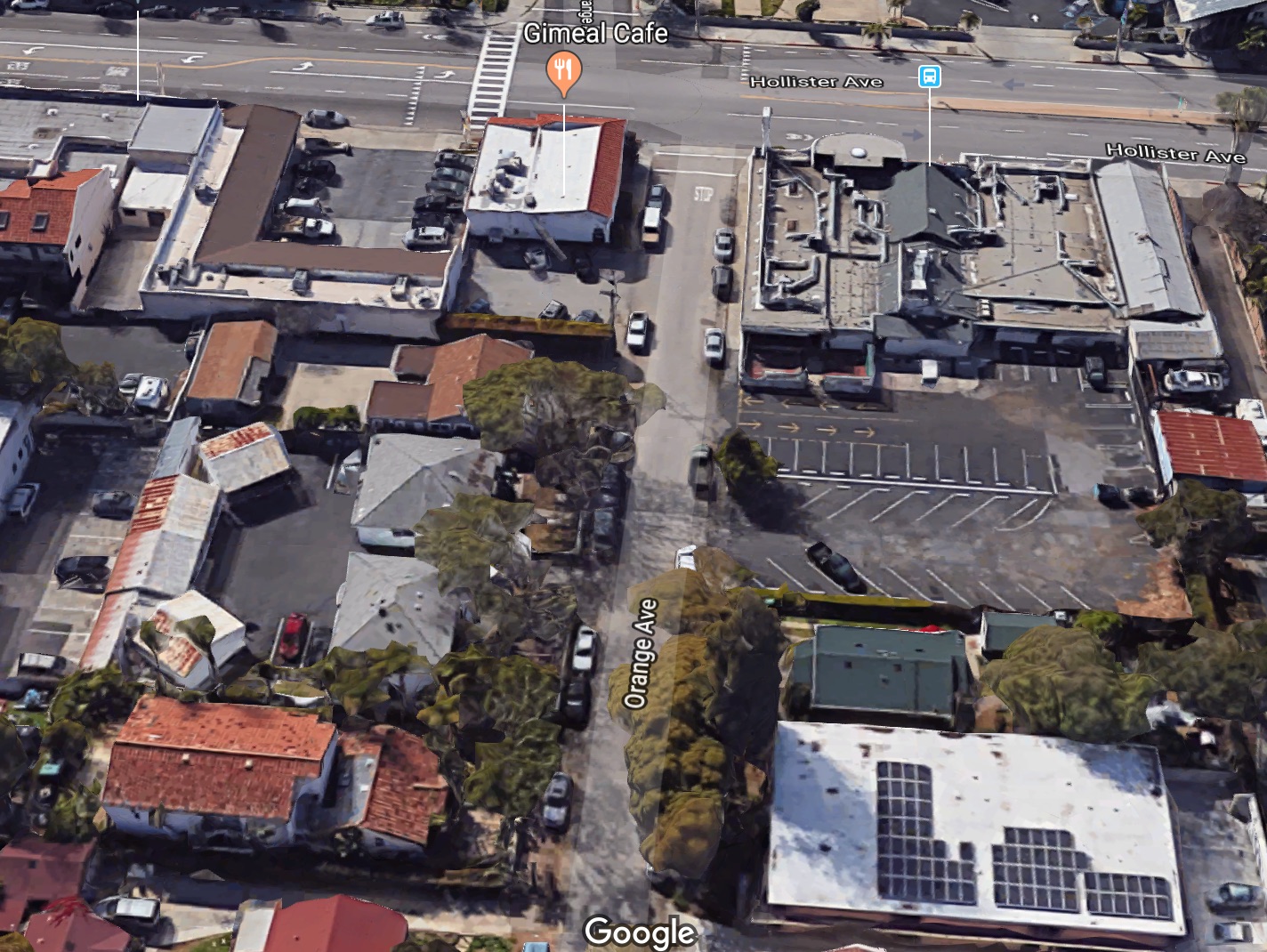Goleta Tackles Parking in Old Town
Discussion Includes 90-Minute Timed Parking, New Lots, Loss of On-Street Parking

When a city’s public works director starts off a meeting about parking by talking liability issues and engineering standards, the immediate impression is that the other shoe is going to smell pretty bad. What happened at Goleta’s Old Town parking meeting on February 19, however, turned on Councilmember Stuart Kasdin’s suggestion to separate the two issues of safety and parking. The City Council gave city staff a clear roadmap of preferences among choices from the loss of 32 on-street parking spaces to the eventual addition of 17 spaces in a new parking lot.
Hollister Avenue between the 217 and Fairview is a collection of businesses, driveways, bus stops, and small side streets serving hundreds of homes and dozens of industrial workshops. Parking issues are the number one problem, according to Old Town residents and businesses surveyed by the city. A couple weeks before, the city had turned back a proposal by the Goleta Chamber of Commerce for a Property Business Improvement District that put parking, among other things, among its ambitions.
One-hour parking exists on nine blocks in Old Town’s business corridor, and before the council that Tuesday were maps that would almost triple the amount of timed parking, which would be increased to 90 minutes. Simultaneously, Public Works proposed removing between 26 and 32 spots to improve visibility at intersections for safety’s sake, but only after studies on violations, collisions, and intersection geometry took place, said Charlie Eberling, the city’s new Public Works director since last April.
The idea that more surveys were necessary or that studies needed to be conducted sounded like unnecessary delay to Phil Unander, who owns Larry’s Auto Parts. In an email to the council, he claimed only one collision had occurred at his Magnolia Street corner in the past 10 years. During public comment Tuesday evening he invited Eberling to take a chair for a day and see if it was dangerous. “I am the survey,” Unander said. “I see where people park. I see what moves and what doesn’t move.”
Immobile cars also concerned Old Town resident Brian Boisky, who told the council he’d reported 24 “abandoned” cars in a three-block area one year. Once they were orange-tagged, the owners just moved them a few feet away, he said. Parking signs to indicate electronic monitoring and enforcement of parking regulations would increase available parking spaces, he believed.
Their frustration was echoed by Councilmember Roger Aceves, who complained the Orange Avenue parking lot, purchased in late 2017, wasn’t going to be usable until 2020. He also groused that the meter-maid three-wheeler for which the city had paid $106,000, fully kitted out with electronic chalking devices, went unused. Mayor Paula Perotte and Councilmember Kyle Richards agreed with him about the Orange Avenue lot, asking for that parking project to be fast-tracked. Richards suggested the city might allow Old Town residents to park there outside the 7 a.m. to 7 p.m. public parking hours, with Perotte commenting the extra parking would be needed when the Old Town sidewalk project displaced car parking. (City spokesperson Valerie Cantella later told the Independent the city was involved in negotiations with a second lot owner for the Orange lot and working out maintenance issues.)
Another city lot, 18 spaces leased from Community West Bank off Pine Avenue, was often empty, Perotte pointed out, wondering if people could find it, much less know it was available. She suggested a shuttle bus system could move people to their jobs —– after admitting she’d parked all day on Old Town streets when working at the Community Action Commission — from city lots, another of which was being looked at near Three Pickles.
Kasdin’s suggestion was to prioritize the 90-minute parking plan to see if it opened up parking spots, as many thought it might. Another program focused on Old Town, the Complete Streets project that looks to solve safety, traffic, and quality of life issues, could change line-of sight issues as well, Kasdin said; Eberling acknowledged that could be part of the safety studies he believed were necessary. Complete Streets encompasses pedestrians and bicyclists, and Councilmember Kyle Richards commented that bicycle racks were missing from Old Town, describing how he had to lock his bike to traffic signs.
The 90-minute timed parking would largely affect Hollister Avenue and one block to the north and south. With marching orders in hand, City Manager Michelle Greene said Public Works and city staff would return with more information on how to accomplish the goals the council had outlined.
This article was corrected on March 7, 2019, to state the Orange Avenue parking lot negotiations weren’t causing a delay but were part of the ongoing work to create the public lot.


